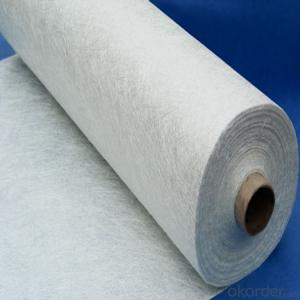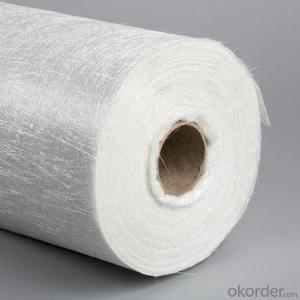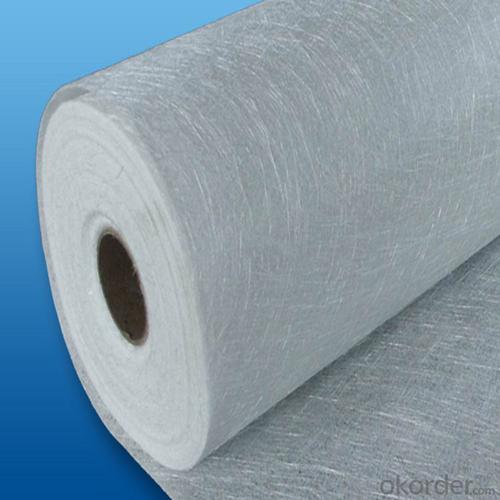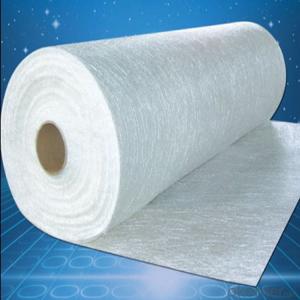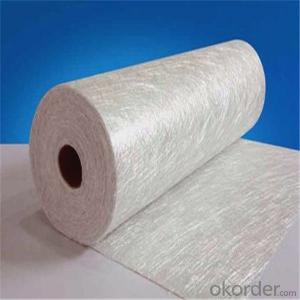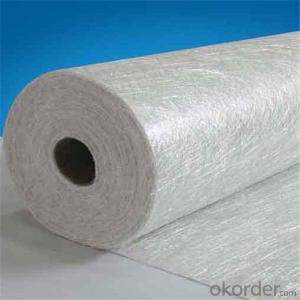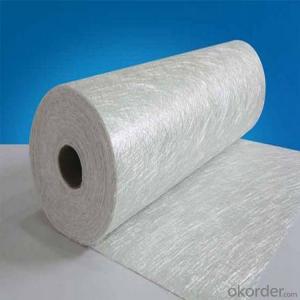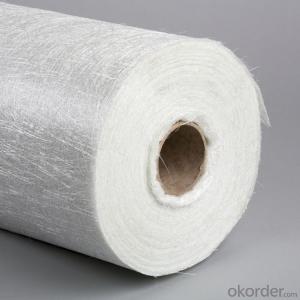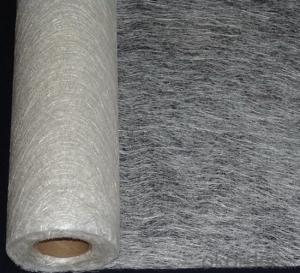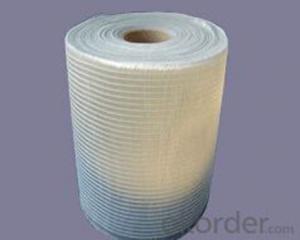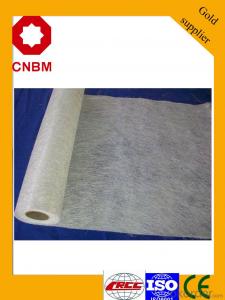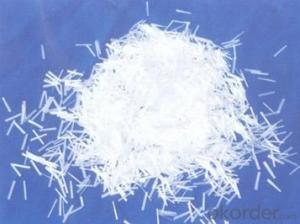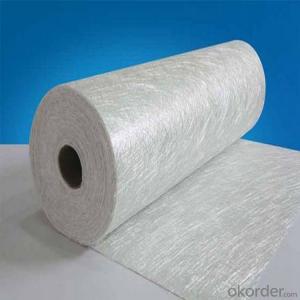Chopped Strand Fiberglass Mat 300 g/m2
- Loading Port:
- China main port
- Payment Terms:
- TT OR LC
- Min Order Qty:
- 1 kg
- Supply Capability:
- 5000 kg/month
OKorder Service Pledge
OKorder Financial Service
You Might Also Like
Product Description:
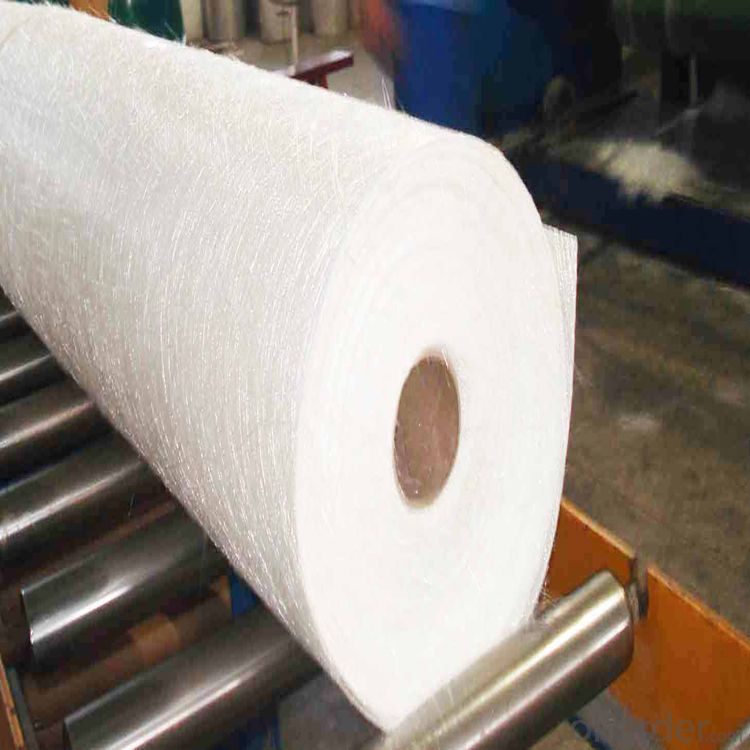
Surfacing Tissue mainly used in the surface layers of FRP products. It features even Fiber distribution, soft feel, level and smooth fiber surface, less glue content, quick resin soak and good pattern fitness. It can improve the product surface property on corrosion resistance, compressive strength, seepage resistance, and longer service life. It is also suitable for spraying; pattern pressing and other FRP pattern technology.
Surfacing Tissue mainly used in the surface layers of FRP products. It features even Fiber distribution, soft feel, level and smooth fiber surface, less glue content, quick resin soak and good pattern fitness. It can improve the product surface property on corrosion resistance, compressive strength, seepage resistance, and longer service life. It is also suitable for spraying; pattern pressing and other FRP pattern technology.
Product Features:
Fast breakdown in styrene
Fiber dispersed evenly
Low binder content
Superior acid corrosion resistance
Specifications:
Item | Over Density | Moisture Content | Chop Density | Polyester Yarn | Width |
(g/m2) | (%) | (g/m2) | (g/m2) | (mm) | |
EMK300 | 309.5 | ≤0.15 | 300 | 9.5 | 50-3300 |
EMK380 | 399 | 380 | 19 | ||
EMK450 | 459.5 | 450 | 9.5 | ||
EMK450 | 469 | 450 | 19 | ||
EMC0020 | 620.9 | 601.9 | 19 | ||
EMC0030 | 909.5 | 900 | 9.5 |
Product Packaging:
Each Surface Tissue is wound onto a paper tube which has an inside diameter of 76mm and the mat roll has a diameter of 330mm. The mat roll is wrapped up with plastic film,and then packed in a cardboard box or wrapped up with kraft paper. The rolls can be vertically or horizontally placed. For transportation, the rolls can be loaded into a cantainer directly or on pallets.
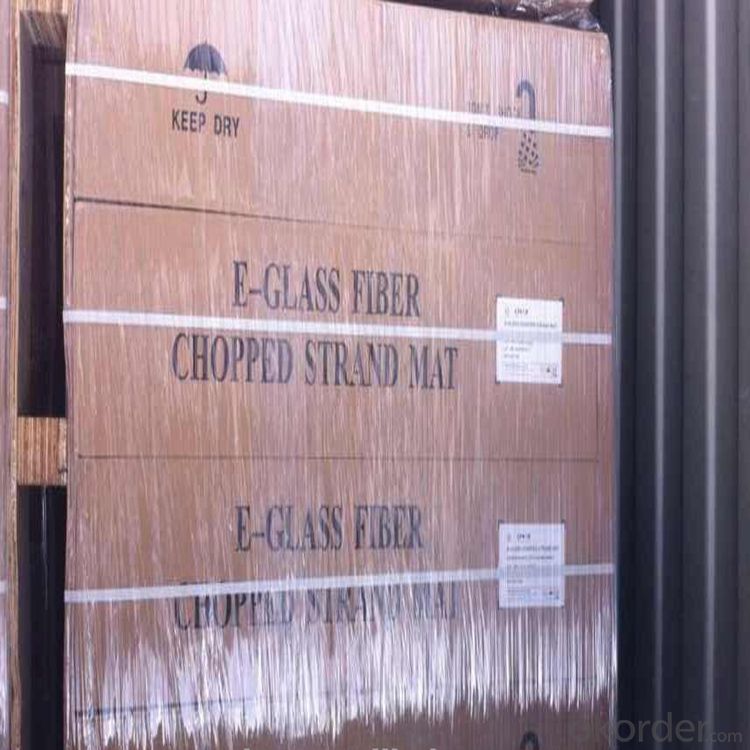
Product Storage:
Unless otherwise specified, Chopped Strand Mat should be stored in a dry, cool and rain-proof area. It is recommended that the room temperature and humidity should be always maintained at 15℃~35℃ and 50%~75% respectively.
Company Information
CNBM (China National Building Material) Group is the largest comprehensive building materials group in China that in integrate scientific research, manufacturing and logistics into one entity. The largest building materials and equipment specialists in China. Upon State Council approval, today CNBM owned more than 300 subordinate manufacturing factories and servicing companies. There are 6 fully owned public listed companies and 11 partially owned with substantial shares public listed companies. In many of these fields, CNBM is playing the leading role in the building industry in the country.

- Q: Brieaf introduction of carbon fiber?
- Along the fiber axis, it present very high strength; therefore the specific strength of CFRP material intensity and density can be achieved above 2000 MPa; high performance carbon fiber which made from polyacrylonitrile fiber precursors have tensile modulus about 200 to 700GPa. Some studies have pointed out that young's modulus (refers to the physical quantity that is characterized by the tensile or compressive strength of the material within the elastic limit) is 2 times more than that of the glass fiber. High purity and high temperature carbonization were used to prepare high performance PAN based carbon fiber, which gave the fiber chemical activity, viscose based carbon fiber. Carbon fiber's manufacturing progress includs fiber spinning. Comparing with aluminum and other metal materials, it is 7 to 9 times of strength of steel. In the early stage of aerospace grade carbon fiber, 3K is the main category, then the fiber is further produced by crosslinking, with its elongation rate greater than 2%. The equipment is complex, and it is destroyed. As it contains a large number of variables, like oxidation and oxygen, but the first two kinds of carbon fiber is mainly produced. The graphite is generally in the 2500 to 3000℃.
- Q: Can fiberglass chopped strand be used in the production of medical implants?
- Fiberglass chopped strand is not typically used in the production of medical implants. Medical implants require materials that are biocompatible, meaning they do not cause any adverse reactions or harm to the human body. Fiberglass chopped strand is made of glass fibers that may not meet the biocompatibility requirements for medical implants. It is more commonly used in industries such as automotive, aerospace, and construction. In the medical field, implants are often made from materials like titanium, stainless steel, or biocompatible polymers that have been extensively tested and approved for use in the human body. These materials have specific properties that make them suitable for implantation, such as their resistance to corrosion, ability to integrate with surrounding tissues, and compatibility with medical imaging techniques. Therefore, it is advisable to use materials specifically designed and approved for medical implant applications to ensure patient safety and optimal performance.
- Q: Can fiberglass chopped strand be used in composite manufacturing processes?
- Yes, fiberglass chopped strand can be used in composite manufacturing processes. It is commonly used as a reinforcement material in composites, providing strength and stiffness to the final product. Chopped strand mat, made from fiberglass strands, is often used in hand lay-up and spray-up processes to create various composite products such as boat hulls, automotive parts, and pipes.
- Q: Can fiberglass chopped strand be used in sporting goods applications?
- Certainly! Sporting goods applications can involve the utilization of fiberglass chopped strand. This particular type of fiberglass is frequently employed as a reinforcement material within composite materials. These composite materials find extensive use in the manufacturing of a diverse range of sporting goods, including but not limited to kayaks, canoes, paddleboards, skis, snowboards, hockey sticks, tennis rackets, and various others. By incorporating fiberglass chopped strand into these applications, the strength, stiffness, and durability of the products can be enhanced, rendering them better suited to withstand the demanding conditions they encounter during use. Furthermore, the manufacturing process easily accommodates the integration of fiberglass chopped strand, thus facilitating the creation of lightweight yet resilient sporting goods.
- Q: How does the strength of fiberglass chopped strand compare to other reinforcement materials?
- The strength of fiberglass chopped strand is generally considered to be comparable to other commonly used reinforcement materials, such as carbon fiber and Kevlar. However, the specific strength of each material can vary depending on the manufacturing process and the specific application.
- Q: How does the fiber content of fiberglass chopped strand-reinforced composites affect their properties?
- The properties of fiberglass chopped strand-reinforced composites are significantly impacted by the amount of fiber present. To begin with, the overall strength and stiffness of the composite material are determined by the fiber content. Increasing the amount of fiber results in stronger and stiffer composites, as the fibers provide reinforcement and resist deformation when under load. This is particularly important in industries such as construction, automotive, and aerospace, where high strength and rigidity are required. Furthermore, the fiber content plays a role in the impact resistance and fatigue life of the composite. A higher fiber content enhances the material's ability to absorb and disperse energy during impact, reducing the risk of fractures or breakages. It also improves the composite's resistance to repetitive loading, extending its fatigue life and increasing its durability over time. In addition, the fiber content influences the thermal and electrical conductivity of the composite. Fiberglass composites with higher fiber content tend to have lower thermal and electrical conductivity, making them suitable for applications that require insulation or electrical resistance, such as electrical enclosures or insulation panels. Lastly, the weight and cost of the composite are affected by the fiber content. Generally, a higher fiber content leads to a denser material, increasing the weight of the composite. However, this density also contributes to its strength and stiffness. Additionally, higher fiber content often results in higher production costs, as more fibers are needed to manufacture the composite. In conclusion, the fiber content of fiberglass chopped strand-reinforced composites has a direct impact on their strength, stiffness, impact resistance, fatigue life, thermal and electrical conductivity, weight, and cost. Therefore, careful consideration of the desired properties and intended application is essential when determining the optimal fiber content for a specific composite material.
- Q: Can fiberglass chopped strand be used in the production of consumer packaging?
- Yes, fiberglass chopped strand can be used in the production of consumer packaging. It is commonly used as a reinforcing material in composite packaging products, providing strength, durability, and resistance to impact and moisture.
- Q: What are the different lengths available for fiberglass chopped strand?
- Various lengths of fiberglass chopped strand are available to meet different needs and applications. The most common lengths range from 1/8 inch (3.2 mm) to 2 inches (50.8 mm). However, manufacturers may also offer shorter lengths, like 1/16 inch (1.6 mm), or longer lengths exceeding 2 inches (50.8 mm), depending on specific requirements. Choosing the appropriate length depends on factors such as desired strength, thickness, and flexibility of the end product. Shorter lengths are often preferred for applications that require improved surface finish and dimensional stability, like panel and sheet molding compounds. On the other hand, longer lengths are typically used in applications that require increased strength and reinforcement, such as fiberglass-reinforced plastics or composite materials. It is important to consider that the length of the fiberglass chopped strand significantly affects the performance and characteristics of the final product. Therefore, it is advisable to consult the manufacturer or supplier to determine the most suitable length for your specific application.
- Q: Can fiberglass chopped strand be used in water slides?
- Yes, fiberglass chopped strand can be used in water slides. Fiberglass is a popular material choice for water slides due to its strength, durability, and resistance to water damage. Chopped strand refers to small strands of fiberglass that are cut into shorter lengths, making it easier to handle and incorporate into the manufacturing process. These chopped strands can be mixed with resin and other materials to create a composite that is then molded into the desired shape of the water slide. The resulting fiberglass composite is able to withstand the constant exposure to water, provide structural integrity, and ensure a smooth and enjoyable ride for water slide enthusiasts.
- Q: Is fiberglass chopped strand compatible with different curing methods?
- Fiberglass chopped strand is indeed compatible with a variety of curing methods. It is widely utilized as a reinforcement material in industries like automotive, construction, and aerospace. When it comes to curing, it can be utilized alongside different methods such as thermosetting and thermoplastic processes. In thermosetting processes, like resin transfer molding (RTM) or vacuum infusion, the typical approach involves impregnating the fiberglass chopped strand with a thermosetting resin. Subsequently, it is cured at elevated temperatures. During this process, a chemical reaction occurs within the resin, resulting in a hardened and resilient composite material. The compatibility of fiberglass chopped strand with these methods is attributed to its ability to provide strength and reinforcement to the cured composite. On the other hand, thermoplastic processes, including injection molding or compression molding, involve mixing the fiberglass chopped strand with a molten thermoplastic resin. As the mixture cools, the resin solidifies. Through this approach, the chopped strand reinforcement enhances the mechanical properties of the thermoplastic material, making it stronger and more resistant to deformation. Fiberglass chopped strand is compatible with these methods due to its ease of incorporation into the molten resin and its ability to distribute evenly throughout the molded part. Ultimately, fiberglass chopped strand is a versatile material that can be utilized across various curing methods. By doing so, it enhances the strength and durability of the final product. With its compatibility across different processes, it has become the preferred choice in industries that demand high-performance composites.
Send your message to us
Chopped Strand Fiberglass Mat 300 g/m2
- Loading Port:
- China main port
- Payment Terms:
- TT OR LC
- Min Order Qty:
- 1 kg
- Supply Capability:
- 5000 kg/month
OKorder Service Pledge
OKorder Financial Service
Similar products
Hot products
Hot Searches
Related keywords

